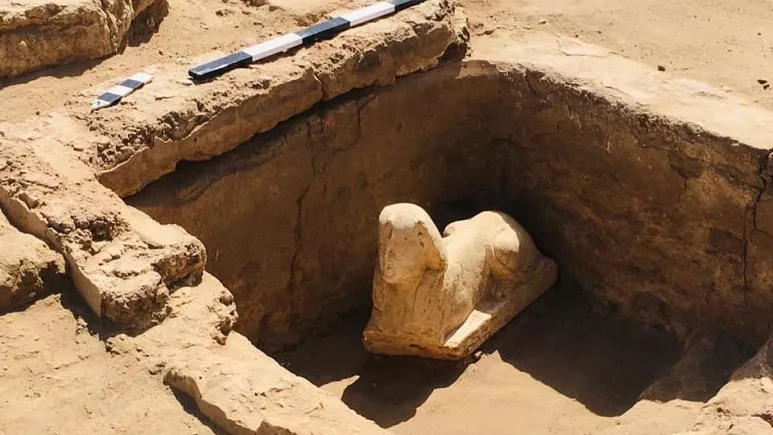A new discovery in Egypt... a statue resembling the "Sphinx" and a new archaeological site in Qena Governorate

Discovery of a statue of the Great Sphinx next to the Dendera Temple in Qena
The Egyptian archaeological mission from Ain Shams University discovered a new statue in the south of the country that resembles the Sphinx and an archaeological site dating back to the Roman era, during the excavation work that it began in mid-February in the area east of the Dendera Temple in Qena Governorate, in which a temple of the god Horus was built. In the Roman era.
Mamdouh El-Damaty, the former Minister of Antiquities and head of the mission, stated that the remains of a limestone cabin were discovered, including a two-level platform, with a foundation and sloping floors, adding that inside it, a basin for storing water was found.
Al-Damaty, a professor of archeology at Ain Shams University, pointed out that during the cleaning work of the basin, a statue in the shape of the Sphinx was found, wearing the headdress known as the Nemes, with a cobra on its forehead, made of limestone and representing one of the Roman emperors.
Mostafa Waziri, Secretary-General of the Supreme Council of Antiquities, said that the Egyptian archaeological mission, headed by Prof. Dr. Mamdouh El-Damaty, former Minister of Antiquities and Professor of Archeology at Ain Shams University, succeeded in discovering the remains of a limestone cabin dating back to the Roman era, during archaeological excavations in the region. Located east of the Dendera Temple in Qena Governorate, in which a temple of the god Horus was built in the Roman era.
According to El-Damaty, it is likely that the statue, which resembles the Great Sphinx located next to the Giza pyramids, belonged to Emperor Claudius. In addition to the discovery of a painting from the Roman era written in hieroglyphs and demotic at the bottom of the statue.

Al-Damaty described the statue as very beautiful, and that its face is distinguished by royal features that were accurately depicted. A light smile appears on the lips, which have two dimples on both ends, and the remains of yellow and red appear on its face.
The former minister announced that the mission will continue excavation work in the area of the Horus Temple, east of the Dendera Temple, and in front of the Isis Gate, to uncover the road linking them.
Source : websites

